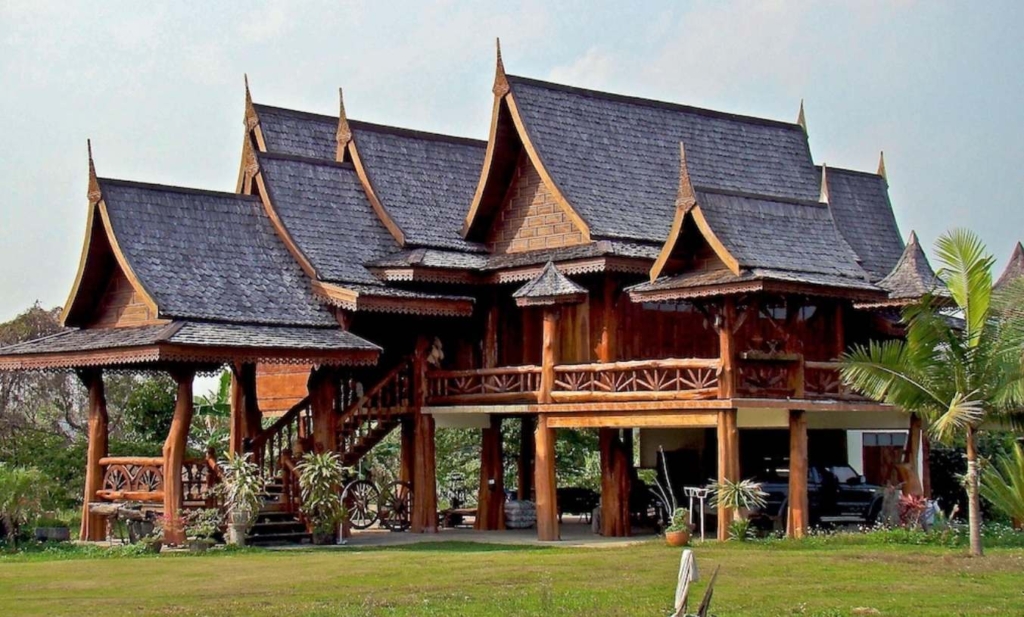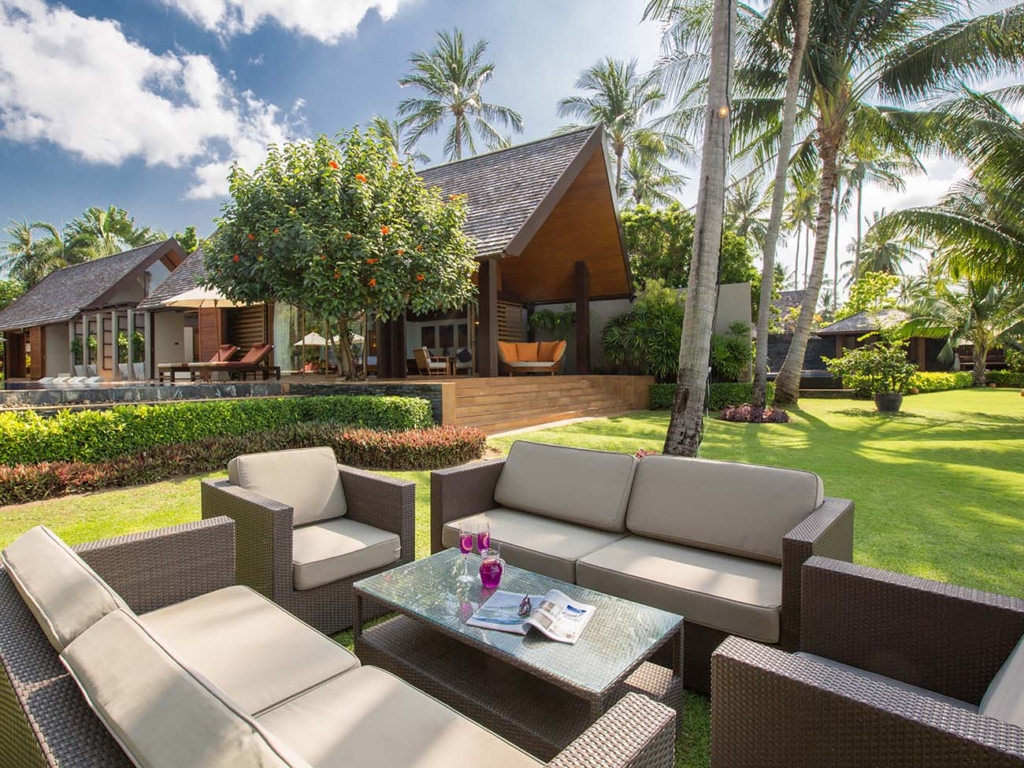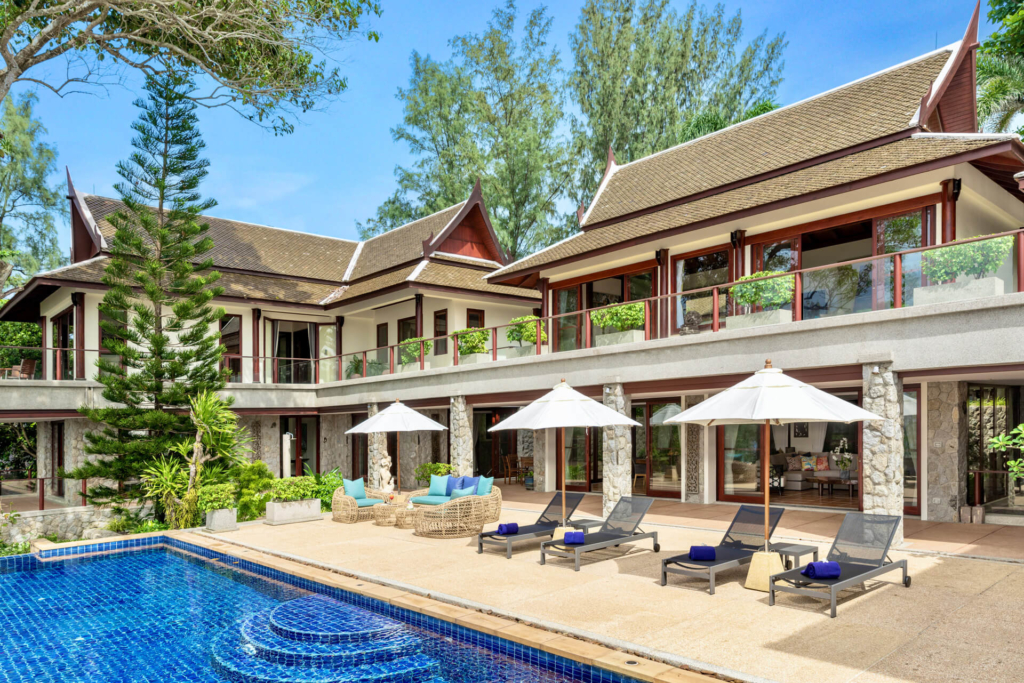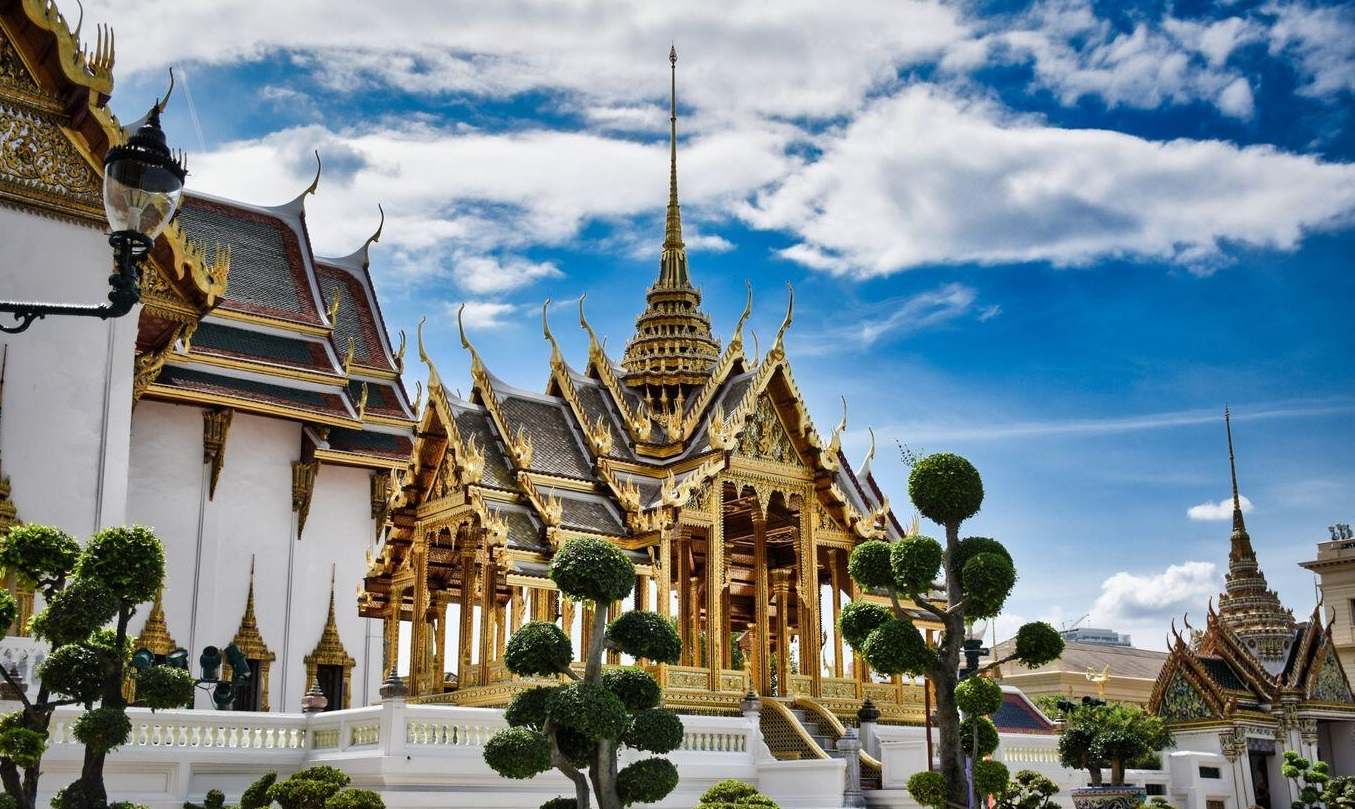Thai architecture is more than just aesthetically pleasing; it is a reflection of the Thai identity. Based on the nation’s spiritual beliefs, culture, and tropical environment, Thai architecture’s distinct features mirror symbolism that goes beyond physical beauty.
Deeply influenced by Buddhism, multi-tiered roofs and intricate ornamentation represent Thai architectural spiritual reverence. In terms of functionality, the country’s hot and humid climate, plus the seasonal monsoons, influence its stilts to protect homes from flooding, and open-air spaces welcome natural ventilation.
Together, the harmonious blend of these influences gives Thai architecture its distinct character, creating homes, temples, and public places that capture the nation’s unique identity.
Essential Features of Traditional Thai Architecture

Thai architecture is instantly recognizable for its elegant silhouettes, ornate details, and strong connection to the natural environment. More than mere design choices, its features stem from centuries of cultural tradition, spiritual symbolism, and practical adaptation to the tropical climate of Thailand. Below are some of the most important elements that define traditional Thai architecture and the places where you can experience them today.
1. Pointed Roofs With Upturned Edges
One of the most iconic features of traditional Thai architecture is the pointed roof with upturned edges, a striking detail seen on temples, palaces, and even private homes. These rooflines often appear to reach for the sky, creating a sense of lightness and grace.
Functionally, the steep angles of these roofs are perfectly suited to Thailand’s weather. During the monsoon season, heavy rain pours down relentlessly, but the steep pitch ensures water runs off quickly without pooling or causing damage. The extended eaves, which often project far beyond the walls of the structure, shield windows and doorways from both rain and sun. This shading helps interiors remain cooler despite the country’s often sweltering heat, reducing reliance on artificial ventilation.
Symbolically, these rooflines carry deep cultural meaning. Many are believed to ward off evil spirits, a belief rooted in Buddhist and animist traditions. In sacred spaces like temples (or wats), the roofs are layered in multiple tiers, each level adorned with intricate carvings, gilded ornaments, and sometimes even colorful ceramic tiles. These details not only elevate the spiritual atmosphere but also highlight the craftsmanship and artistry central to Thai identity.
2. Salas
Another distinctive feature of Thai architecture is the sala—a roofed, open-sided pavilion that can be found in both public and private settings. Because salas have no walls, they allow for free airflow, which is essential in a tropical climate. Their open design also offers unobstructed views of the surrounding landscape, whether it’s a temple courtyard, a riverside village, or a bustling marketplace.
Salas serve a wide variety of purposes. In temple grounds, they often function as resting places for visitors or as venues for community events and teaching. In rural areas, they might serve as spots for meditation or casual dining, while in urban settings, they can act as public shelters for people to gather, wait for transportation, or seek shade from the midday sun. Regardless of their setting, salas embody the communal spirit of Thai life—a place where people can come together, relax, and connect.
3. Stilts and Raised Foundations

Because much of Thailand is low-lying and prone to seasonal flooding, many traditional homes are elevated on stilts or built on raised foundations. This practical design keeps living quarters safe from rising waters and protects against pests like snakes or insects. The elevation also allows for cooling breezes to circulate underneath, which further contributes to a comfortable indoor environment.
The space beneath these raised homes is rarely wasted. Traditionally, families might use it to store livestock, firewood, or farming tools. In many regions, it doubles as a shaded sitting area, ideal for household chores or social gatherings during the hottest parts of the day. This multifunctional use of space reflects the resourcefulness and adaptability of Thai architecture.
4. Open-Air Spaces
Ventilation and airflow are critical considerations in Thai architecture, given the country’s humid climate. For this reason, open-air spaces are incorporated wherever possible. Homes often feature wide verandas, large windows, and minimal interior partitions, allowing air to circulate freely from one room to another.
These open layouts are not only practical but also foster social interaction. Families can easily communicate across different parts of the house, and visitors are welcomed into a space that feels expansive and connected to nature. In traditional village homes, these open spaces often double as areas for communal activities, from preparing meals together to celebrating local festivals.
5. Terraces

Terraces are another hallmark of Thai architecture, designed to seamlessly blend indoor living with the natural outdoors. These wide platforms, often shaded by overhanging roofs or surrounded by balustrades, provide residents with a comfortable space to lounge, work, or socialize while enjoying fresh air and scenic views.
But terraces are more than just leisure spaces. In many Thai homes, they are multifunctional zones where people dry clothes, sort agricultural produce, or prepare food. They are also popular gathering spots for neighbors, reinforcing the communal bonds that are such an integral part of Thai life. In this way, terraces embody the adaptability and social focus of traditional Thai design.
Where Elements of Traditional Thai Architecture Can Be Found
While these features were developed centuries ago, they remain deeply embedded in Thailand’s built environment. To truly appreciate them, travelers can seek out the following places:
1. Temples
Thailand’s Buddhist temples, or wats, are perhaps the most spectacular showcases of traditional architecture. From the multi-tiered, pointed roofs to the gilded carvings and elaborate ornamentation, these sacred spaces reflect both spiritual devotion and artistic heritage. Many temples incorporate salas where visitors can rest or meditate, along with open courtyards and airy interiors that encourage reflection and community gatherings.
2. Public Places
Elements of traditional Thai design also appear in public structures such as markets, pavilions in parks, and government buildings. Here, features like open-air layouts, decorative rooflines, and shaded terraces are adapted to serve modern needs while still echoing the country’s cultural roots. These spaces often become hubs for social interaction, celebrations, and local commerce, continuing the tradition of architecture as a facilitator of community life.
3. Select Private Villas

Even in contemporary accommodations, traditional Thai elements live on. Many holiday homes in Phuket or beautiful villas in Koh Samui draw inspiration from these time-honored designs. Guests might find raised floors that improve airflow, elegant rooflines with carved details, and wide terraces perfect for enjoying tropical sunsets. By blending modern amenities with these traditional touches, these villas offer travelers an immersive cultural experience without sacrificing comfort.
Related article: Top Destinations for Luxury Villas in Thailand
A Window Into Thailand’s Soul
Overall, Thai architecture is more than just a celebration of the country’s culture, spiritual beliefs, and nod to its natural environment; it is an accurate representation of its unique identity. Each element of traditional Thai design provides a deep understanding of its culture and way of life, reflecting values that include harmony with the natural environment, connection with the community, and spiritual beliefs. By appreciating these elements, travelers gain a better and deeper cultural awareness, which helps them understand Thai culture, tradition, and overall lifestyle more deeply.
–
Featured Image by Cool Asia Travel


